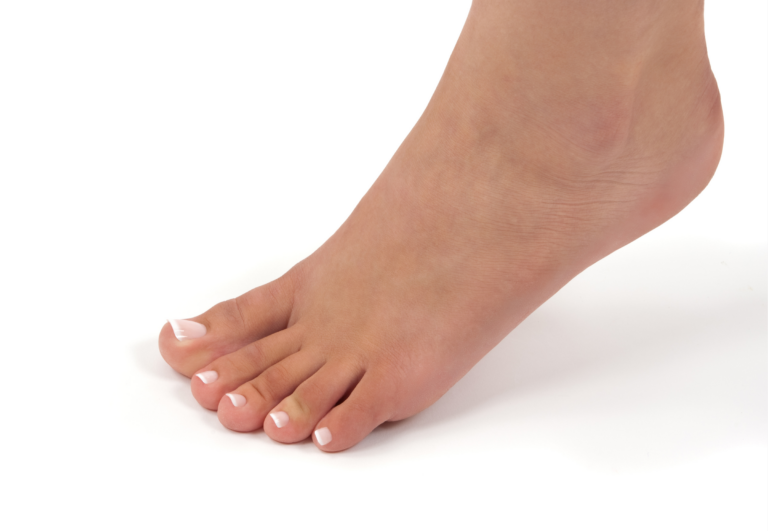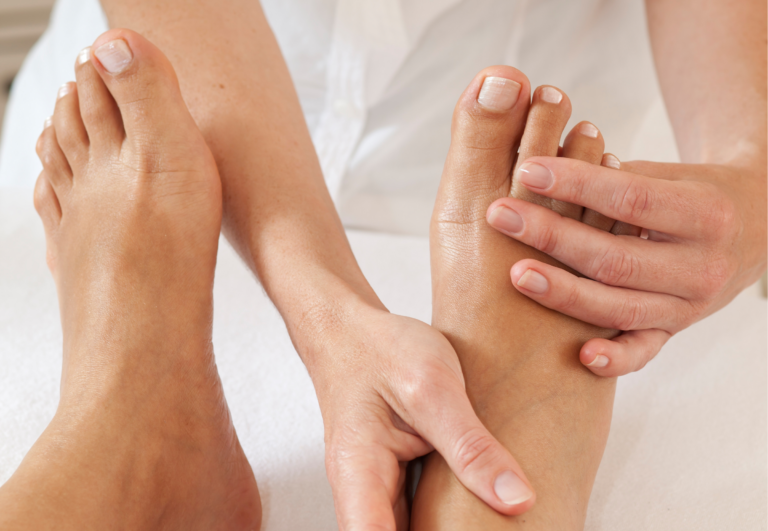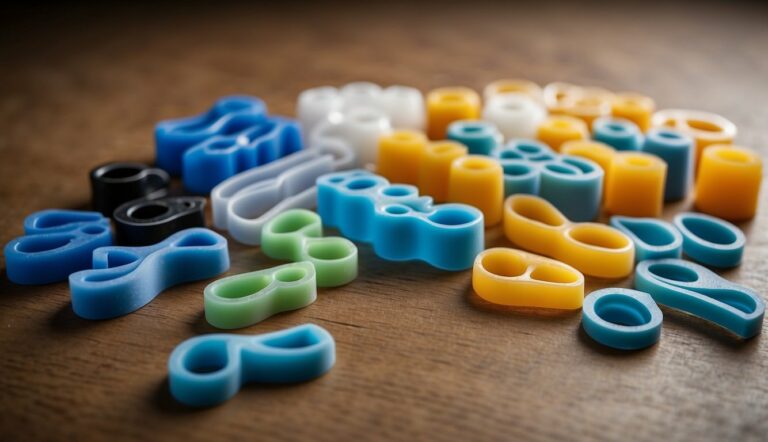Can Toe Spacers Reduce the Need for Foot Surgery? Exploring Non-Invasive Alternatives
Toe spacers, simple devices designed to separate the toes, are becoming increasingly recognized for their potential benefits in foot health. As an expert in the use of toe spacers, I’ve seen firsthand how they can provide relief and aid in the realignment of toes. While not a cure-all, these tools have shown promise in addressing certain foot ailments that could potentially lead to surgery if left untreated.
Incorporating toe spacers into a preventive care routine may play a role in reducing the likelihood of needing foot surgery down the line. They work by gently stretching the muscles and ligaments of the foot, which can help alleviate pain caused by conditions like bunions or hammertoes. However, while toe spacers can be beneficial for maintaining foot health, they are not a substitute for professional medical advice or treatment.
Can Toe Spacers Reduce the Need for Foot Surgery?
Toe spacers may reduce the need for foot surgery in some cases by addressing mild to moderate foot deformities and providing relief from associated symptoms. However, their effectiveness can vary depending on the individual condition and severity.
Here’s how toe spacers might play a role:
- Preventive Measures: By realigning the toes and alleviating pressure on the joints, toe spacers can serve as a preventive measure against the progression of conditions like bunions and hammertoes, potentially reducing the future need for surgical intervention.
- Symptomatic Relief: For individuals experiencing pain or discomfort from toe misalignment, toe spacers can offer symptomatic relief that may delay or eliminate the immediate consideration for surgery.
- Complementary Treatment: In conjunction with other conservative treatments such as physical therapy, exercises, and proper footwear, toe spacers can be part of a comprehensive approach that may improve foot function and postpone the need for surgery.
- Non-Structural Deformities: Toe spacers are more likely to reduce the need for surgery in cases where the deformities are not structurally fixed or are in the early stages.
It is important to note that toe spacers are not a guaranteed alternative to surgery, particularly for severe deformities or when conservative treatments have failed to provide adequate relief or stop the progression of a condition. A healthcare professional can assess the specific situation and advise whether toe spacers could be a viable option to delay or avoid surgery.

Anatomy and Biomechanics of the Foot
The complex structure of the foot, encompassing an intricate balance of muscles, ligaments, and bones, directly contributes to mobility and stability during movement. The role I play as a toe spacer expert is to emphasize how these elements work together for foot functionality.
Toes and Toe Joints
My experience tells me that toes play a crucial role in maintaining balance and enabling forward movement. Each toe has three joints, except for the big toe which usually has two. These joints work as levers that the muscles and ligaments control during walking or running.
Muscles and Ligaments
Supporting the toes and the entire foot are numerous muscles and ligaments. The muscles, both intrinsic and extrinsic, are responsible for fine motor movements and overall stability. Ligaments, such as the plantar fascia, provide crucial arch support and distribute the force evenly when the foot hits the ground.
Foot Arch and Support
The architecture of the foot arch is vital for effective shock absorption and weight distribution. Its biomechanics allow for a flexible yet stable structure that adjusts to various terrains. Arch support is essential, as it impacts the entire kinetic chain from the feet up.
Common Foot Deformities and Conditions
When it comes to foot health, understanding common issues can help in making informed decisions about treatment and prevention. Deformities like bunions and heel pain from conditions like plantar fasciitis may be manageable with non-surgical interventions, such as toe spacers, designed to provide relief and correct certain foot ailments.
Bunions and Hallux Valgus
Bunions, clinically known as hallux valgus, are bony protrusions that form at the base of the big toe. They develop as the big toe pushes against the next toe, often due to tight footwear or genetic predisposition. This misalignment can lead to:
- Pain: Described as a sharp or throbbing sensation.
- Impaired Mobility: Difficulty in walking or wearing shoes.
Over time, bunions can contribute to arthritis, especially in individuals with rheumatoid arthritis. Managing bunions may involve wider shoes, orthotics, and strategically placed toe spacers to alleviate pressure.
Hammertoe and Mallet Toe
Hammertoe and mallet toe are deformities typically affecting the second, third, or fourth toes, causing them to bend at the joint.
- Hammertoe: An abnormal bend in the middle joint of a toe.
- Mallet Toe: A deformity where the toe’s tip bends downward.
These issues often stem from wearing ill-fitting shoes or muscle imbalance and may be associated with conditions like diabetes. The use of toe spacers can help correct the alignment and reduce discomfort.
Plantar Fasciitis and Flat Feet
Plantar fasciitis is an inflammation of the plantar fascia, the ligament running along the bottom of the foot, leading to:
- Heel Pain: Especially notable during the first steps in the morning.
- Stiffness: Often exacerbated by prolonged standing or rising from a seated position.
Flat feet, or fallen arches, can increase the risk of plantar fasciitis and may result in foot pain and problems with gait. Strengthening exercises, supportive shoes, and the use of toe spacers can provide relief and support proper foot alignment.
Conservative Interventions for Foot Pain Relief
My experience with toe spacers has shown that non-invasive methods can play a crucial role in managing foot pain and may reduce the need for surgery. Here, I’ll detail some key conservative interventions.
Orthopedic Inserts and Splints
Splints: These devices wrap around the foot and big toe to hold the toe in a straighter position, usually applied at night to reduce pain and correct deformities like bunions.
- Insoles: Offering additional arch support and cushioning, they can be inserted into shoes to alleviate pain, especially for those standing for long durations.
Stretching and Strengthening Exercises
Exercises: I recommend exercises that strengthen toe grip, hallux plantarflexion, and abduction to improve foot function and potentially alleviate pain.
- Stretching: Simple routines targeting ankle dorsiflexion can increase flexibility and decrease discomfort during movement.
Proper Footwear Selection
- Cushioning: Shoes with adequate cushioning absorb impact and provide relief from foot pain.
- Heel Height: Minimize the wear of high heels as they can exacerbate foot pain and lead to complications.
- Correct Fit: Comfortable, well-fitting shoes that offer room for toe movement are essential. Going barefoot or wearing shoes with a wide toe box can also reduce pressure on the toes.
Benefits and Uses of Toe Spacers
My experience with toe spacers informs me that their primary use involves promoting foot health in several ways, especially in preventing potential surgery by addressing issues early on. Let’s explore the specific benefits and applications.
Alleviating Pain and Discomfort
Toe spacers can be helpful as a non-invasive solution for reducing pain and discomfort in the feet. By spreading the toes, they encourage proper toe alignment, which can lead to a decrease in inflammation and swelling often associated with foot ailments. An immediate effect is often a sense of relief and added comfort as the pressure on corns and blisters is diminished.
- Pain Reduction: Spreads toes to minimize pressure on sore areas
- Discomfort Alleviation: Promotes a more natural toe alignment for immediate relief
Preventing Further Deformity
I’ve seen toe spreaders play a role in preventing the progression of various foot deformities. The consistent use of toe spacers can assist in keeping toes properly aligned, thereby potentially stopping conditions like bunions or hammertoes from worsening.
- Deformity Prevention: Aids in maintaining natural toe alignment
- Condition Management: Helps in controlling common toe deformities from advancing
Improving Foot Function and Posture
Properly aligned toes contribute to overall better foot function and posture. Toe spacers encourage flexibility and strengthen foot muscles, which can improve balance and posture. Users might find that by realigning their toes with spacers, they have a more stable foundation and improved athletic performance.
- Enhanced Balance: Supports stable footing for athletic and daily activities
- Foot Function: Boosts flexibility and muscle strength for better support
Evaluating the Effectiveness of Toe Spacers
As an expert in toe spacers, I’ll provide an in-depth look at their potential in reducing future foot surgery needs. They offer temporary relief and may support foot alignment, but their true long-term effectiveness requires a closer examination.
Clinical Evidence and Studies
Studies, such as those published in the Journal of the American Podiatric Medical Association, indicate that toe spacers made of medical-grade gel or other soft materials may provide temporary relief from foot pain by encouraging proper toe alignment. Clinical trials reveal that while toe spacers can reduce discomfort and improve toe spacing, they are not a guaranteed preventive measure against surgery. Instead, they should be integrated into a wider foot care regimen.
User Testimonials and Feedback
Many users of products like the Mind Bodhi Toe Separators and Yoga Toes Gems report improvements in comfort and toe alignment while using these devices. Feedback highlights include a reduction in pain, especially among those with mild toe deformities, and benefits to foot mechanics during activities like walking or running. However, it’s important to note that personal experiences vary and should not replace professional medical advice.
Comparison with Other Treatments
Comparing toe spacers to other treatments involves understanding their role as part of a broader approach to foot health. Unlike surgery, which is invasive and has longer recovery times, toe spacers offer a non-invasive option with immediate use. They are often compared to other conservative treatments, such as orthotics or physical therapy, which may also help alleviate foot issues without surgery. While toe spacers can be a beneficial tool, they should be used in conjunction with other methods and under the guidance of a podiatrist for the best outcomes.




